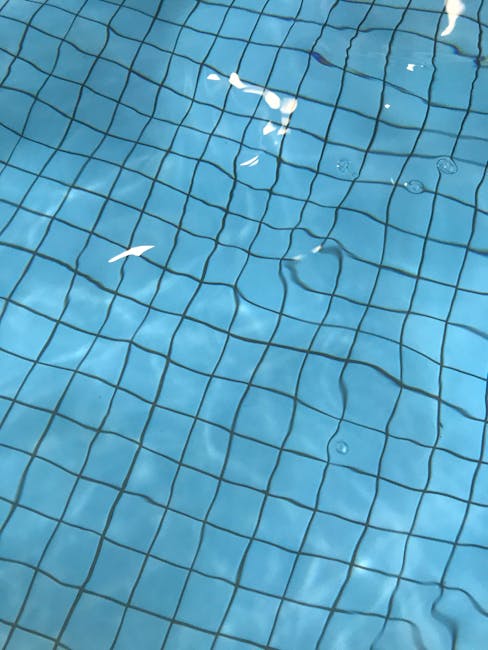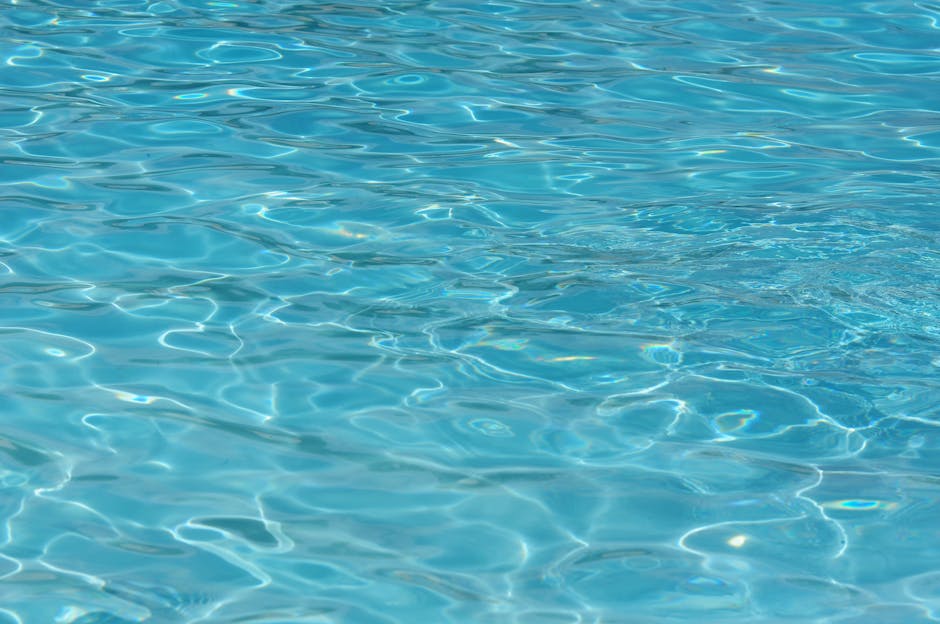Welcome to the wonderful world of pool ownership! Now that you’ve resurfaced your pool, it’s time to dive into the maintenance routine. In this article, we’ll cover everything you need to know about pool cleaning routines for resurfaced pools. So grab your goggles and let’s get started!
To keep your pool sparkling clean and inviting, regular cleaning is key. By following a few simple steps, you can ensure that your resurfaced pool remains in top condition for years to come. From skimming the surface to brushing the walls and vacuuming the floor, we’ll walk you through the essential tasks that will keep your pool water crystal clear.
Cleaning your pool doesn’t have to be a daunting task. Whether you’re a new pool owner or a seasoned pro, we’ve got you covered. Our expert tips and tricks will make maintaining your resurfaced pool a breeze, so you can spend more time splashing around and less time worrying about maintenance. So, let’s dive in and discover the secrets to a clean and pristine resurfaced pool!
Pool Cleaning Routines for Resurfaced Pools: Maintaining the Beauty and Functionality
Having a resurfaced pool can transform your backyard into a stunning oasis, but proper maintenance is essential to keep it looking and functioning its best. In this article, we will delve into the various pool cleaning routines that are specifically tailored for resurfaced pools. From regular maintenance tasks to special care tips, we will cover everything you need to know to ensure your resurfaced pool remains in pristine condition.
The Importance of Regular Skimming and Vacuuming
Skimming and vacuuming your pool regularly is fundamental to prevent the buildup of debris and maintain a crystal-clear water surface. For resurfaced pools, which often have smoother finishes than traditional pools, it is even more critical to stay on top of this routine. The smooth surface of a resurfaced pool can make debris more noticeable, and neglecting regular skimming and vacuuming can lead to unsightly stains and damage.
Start by skimming the water surface daily to remove leaves, bugs, and any other floating debris. Use a long-handled skimmer net to reach all areas of the pool. Pay extra attention to corners, steps, and around any pool features. Additionally, invest in a quality pool vacuum designed for smooth surfaces to ensure thorough cleaning. Vacuum the pool at least once a week, paying close attention to the bottom and walls of the pool. This will help prevent the accumulation of dirt and algae growth, which can mar the appearance of your resurfaced pool.
Choosing the Right Cleaning Chemicals
Proper chemical balancing is essential for maintaining the water clarity and preventing any deterioration of the resurfaced pool’s finish. When it comes to cleaning chemicals, there are a few key products to consider:
- Chlorine: Chlorine is used to sanitize the pool water and kill bacteria and algae. It is crucial to regularly test the chlorine levels and adjust accordingly to keep the water clean and safe.
- pH Balancers: The pH level of your pool water should be properly balanced to prevent any corrosion or damage to the resurfaced pool. Invest in pH increaser and decreaser products to keep the water within the ideal pH range.
- Algaecides: Resurfaced pools are susceptible to algae growth, especially during warmer months. Adding algaecide to your pool water regularly can help prevent algae from forming and keep your pool looking pristine.
- Metal Sequestering Agents: These chemicals help prevent staining caused by metals, such as iron or copper, present in the water. Using a metal sequestering agent can ensure that your resurfaced pool remains free from unsightly stains.
It is essential to follow the manufacturer’s instructions when using pool chemicals and regularly test the water to ensure proper chemical balance. Consider investing in a quality water testing kit to make this process easier and more accurate.
Brushing and Surface Cleaning
Regular brushing and surface cleaning is crucial for maintaining the beauty and longevity of a resurfaced pool. The smooth finish of a resurfaced pool can be more prone to staining and discoloration, making it important to brush the pool walls and bottom at least once a week. Use a pool brush with nylon bristles or soft material suitable for your pool type. Pay close attention to areas with high traffic, such as steps and bannisters.
In addition to regular brushing, surface cleaning is also important. This includes removing any stains or marks promptly to prevent them from becoming permanent. Use a pool-safe cleaner and a soft cloth to gently scrub away any dirt or discoloration. Avoid using abrasive materials or harsh chemicals that can damage the resurfaced pool’s finish.
Additional Tips for Maintaining a Resurfaced Pool
Key Takeaways: Pool Cleaning Routines for Resurfaced Pools
- Regularly skim the pool surface to remove debris and leaves.
- Use a pool brush to scrub the walls and floor to prevent algae buildup.
- Monitor the chemical levels and balance them accordingly.
- Run the pool pump and filter system for a few hours each day to keep the water clean.
- Check and clean the pool filters regularly to maintain proper filtration.
Frequently Asked Questions
Welcome to our pool cleaning knowledge hub! Maintaining a clean and well-maintained pool is essential, especially for a resurfaced pool. Below, you’ll find answers to some common questions related to pool cleaning routines for resurfaced pools.
1. How often should I clean my resurfaced pool?
Regular cleaning is crucial for keeping your resurfaced pool in optimal condition. It’s recommended to clean your pool at least once a week to remove debris, leaves, and other contaminants. However, the frequency may vary depending on your pool usage and location. If your pool is used frequently or surrounded by trees, you may need to clean it more often.
In addition to regular cleaning, it’s also important to perform a thorough cleaning at the start and end of each swimming season. This includes scrubbing the pool walls and floor, cleaning the filters, and balancing the water chemistry. By following a consistent cleaning schedule, you can enjoy a sparkling clean and inviting pool all year round.
2. How do I clean the walls and floor of my resurfaced pool?
When it comes to cleaning the walls and floor of your resurfaced pool, it’s important to use the right tools and techniques to avoid damaging the surface. Start by brushing the pool walls and floor using a soft-bristle pool brush. This will help remove any dirt, algae, or stains that may have accumulated.
If you notice stubborn stains, you can use a non-abrasive cleaner specifically designed for pools. Make sure to follow the manufacturer’s instructions and test the cleaner in a small, inconspicuous area before applying it to the entire pool surface. Rinse the walls and floor thoroughly after cleaning to remove any residue. Regular brushing and cleaning will help keep your resurfaced pool looking pristine and prolong its lifespan.
3. How can I prevent algae growth in my resurfaced pool?
Preventing algae growth in your resurfaced pool is key to maintaining its beauty and cleanliness. One of the most effective ways to prevent algae is by maintaining proper water chemistry. Regularly test and balance the pH, alkalinity, and sanitizer levels in your pool. This will create an environment that is less conducive to algae growth.
In addition to water chemistry, proper filtration and circulation also play a crucial role in preventing algae. Make sure your pool’s filtration system is in good working condition and run it for an adequate amount of time each day. Brushing the pool walls and floor regularly, as mentioned before, can also help prevent algae buildup. Finally, be proactive in removing debris and leaves from the pool to minimize organic matter that can nourish algae growth.
4. Should I hire a professional for pool cleaning or can I do it myself?
Whether to hire a professional for pool cleaning or do it yourself depends on your comfort level, time availability, and pool maintenance knowledge. If you have the necessary knowledge, skills, and time to dedicate to proper pool maintenance, you can certainly clean your pool yourself.
However, if you’re unsure about the right cleaning techniques, don’t have the time, or simply prefer to leave it to the experts, hiring a professional pool cleaner is a great option. They have the expertise, equipment, and experience to ensure your resurfaced pool is cleaned and maintained properly. Professional cleaners also often offer comprehensive services, including water testing and chemical balancing, to keep your pool in top shape.
5. Are there any specific pool cleaning practices I should follow for resurfaced pools?
Resurfaced pools require some specific cleaning practices to protect the newly resurfaced surface. First and foremost, avoid using abrasive brushes or harsh chemicals that can damage the surface. Opt for soft-bristle brushes and non-abrasive cleaners specifically designed for pools.
Additionally, be mindful of the pool’s water chemistry. Imbalanced water with high or low pH levels can damage the resurfaced surface. Regularly test and adjust the water chemistry to ensure it falls within the recommended ranges. Finally, be gentle when cleaning the pool and avoid using excessive force while scrubbing. With proper care and maintenance, your resurfaced pool will maintain its beauty and durability for years to come.
Summary
Keeping your newly resurfaced pool clean is important for its longevity and your enjoyment. First, make sure to regularly skim the surface of the water to remove leaves and debris. Next, use a pool brush to scrub the walls and floor of your pool. After that, don’t forget to clean out the skimmer and pump baskets to maintain proper water flow. Additionally, testing and balancing the chemicals in your pool is crucial for keeping the water clear and safe. Finally, remember to clean and backwash your pool filter regularly to ensure optimal filtration. By following these simple steps, you can keep your resurfaced pool looking great all season long!

